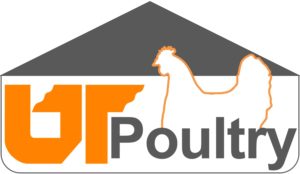Xinge Hu
The poultry industry is constantly seeking innovative and sustainable strategies to improve bird health and productivity while reducing reliance on antibiotic growth promoters (AGPs). Two of the most promising approaches are prebiotics and syn-biotics, which work to enhance gut health, boost immune function, and optimize overall performance in poultry production systems.
The Role of Prebiotics in Poultry Health
Prebiotics are non-digestible feed ingredients that selectively stimulate the growth and activity of beneficial bacteria in the poultry gut. By fostering a healthy gut microbiome, prebiotics help improve digestion, nutrient absorption, and immune function. Their benefits include:
Promoting Gut Health: Prebiotics encourage the proliferation of beneficial gut bacteria, creating a balanced microbiome. A healthier microbiome reduces colonization by harmful pathogens, lowering the risk of gastrointestinal diseases like necrotic enteritis.
Enhancing Nutrient Utilization: Prebiotics strengthen gut integrity and function, aiding in more efficient nutrient digestion and absorption. Improved feed conversion ratios (FCR) result in better production efficiency and reduced feed costs.
Boosting Immune Response: Prebiotics stimulate the production of short-chain fatty acids (SCFAs), such as butyrate, which enhance gut barrier function and immune system resilience. They modulate inflammation, supporting birds’ natural defenses against disease.
Supporting Growth and Performance: Prebiotics contribute to faster growth rates, improved weight gain, and better resilience to stressors such as transportation, vaccination, and environmental changes. Birds receiving prebiotic supplementation often experience lower mortality rates and more consistent production outcomes.
Reducing Antibiotic Dependence: By promoting natural disease resistance and supporting gut health, prebiotics help reduce the need for antibiotics, aligning with the poultry industry’s shift toward antibiotic-free production systems.
The Added Power of Syn-biotics in Poultry
Syn-biotics combine the benefits of prebiotics with probiotics—live beneficial microorganisms that directly support gut health. This synergistic combination amplifies the benefits of both components, offering additional advantages for poultry health and performance.
Synergistic Gut Health Benefits: Probiotics introduced in syn-biotics thrive by utilizing the prebiotic as an energy source, leading to more robust and sustained gut health improvements. Syn-biotics accelerate the establishment of a balanced gut microbiome, promoting long-term digestive health.
Enhanced Nutrient Breakdown and Utilization: Syn-biotics improve digestive enzyme activity, resulting in more effective nutrient breakdown and absorption. This leads to superior feed efficiency, reducing overall production costs.
Stronger Immune Function: The combination of prebiotics and probiotics strengthens the immune system more effectively than either component alone. Syn-biotics boost SCFA production and interact with gut-associated lymphoid tissue (GALT) to enhance disease resistance.
Superior Growth and Performance: Syn-biotics promote higher growth rates and improved weight gain, particularly in stress-prone environments. Birds supplemented with syn-biotics often demonstrate better resilience against stress factors like environmental changes and vaccination.
Effective Pathogen Control: Syn-biotics reduce colonization by harmful pathogens such as Salmonella through competitive exclusion and improved gut barrier integrity. This contributes to safer poultry products and better food safety outcomes.
Implementing Prebiotics and Syn-biotics in Poultry Production
Incorporating prebiotics and syn-biotics into poultry production requires a thoughtful and tailored approach. These additives are typically included in feed formulations, with concentrations adjusted based on the specific needs of different production phases, such as starter, grower, and finisher diets, or the type of bird, whether broilers, layers, or breeders. To maximize their benefits, regular monitoring of flock health and performance is essential. This ensures that the supplementation strategy remains effective and can be adjusted as needed to address changing environmental conditions or production goals. Collaboration with poultry nutritionists and veterinarians is also vital. These professionals can help design feeding programs that align with both the biological needs of the birds and the operational objectives of the producer, ensuring that the integration of prebiotics and syn-biotics yields optimal results.
Addressing Challenges and Looking Ahead
Despite their significant benefits, prebiotics and syn-biotics face some challenges in widespread adoption. Cost remains a critical consideration for producers, as the price of these additives must be balanced against their long-term advantages in improving bird health and productivity. Additionally, the effectiveness of prebiotics and syn-biotics can vary depending on factors such as the composition of the bird’s gut microbiome, the quality of the diet, and environmental conditions like housing and management practices. Continued research is essential to overcome these obstacles, particularly in establishing standardized dosing protocols and understanding the long-term impacts of these additives across various production systems. Looking ahead, innovation in this field holds great promise for refining the application of prebiotics and syn-biotics, making them more accessible and effective. By addressing these challenges, the poultry industry can fully leverage the potential of these tools to enhance sustainability, animal welfare, and overall productivity.
